 Originally published July 5, 1996, in Comics Buyer’s Guide #1181
Originally published July 5, 1996, in Comics Buyer’s Guide #1181
And now for something completely different: A guest column But I Digress.
Basically, Dave Sim approached me with a piece that he had written for Diamond Comics to run as part of their catalogue, and they opted not to run it. So he came to me and asked me if I’d be interested in running it here in BID. I read it over and said, “Sure.”
Now… I’m not going to tell you at this moment if I agree with it or not. Form your own opinions, come back in a week or two, and we’ll discuss it.
And now, Dave Sim:
Parting Shot
When I’m asked to write one of these opinion pieces, I try to suit the subject to the environment—in this case Diamond Comic Distributors. I got a fax recently requesting input on making Previews more suited to “family values” store environments. I believe the rating level desired was PG-13 as regards the content of graphics attached to solicitations. Complaints had been lodged by a variety of “family values” stores that the content of the graphics had become—well—too graphic both in terms of the sex and violence portrayed. The question is long overdue for an answer.
With the genuinely explicit material having been sequestered in the Adult Supplement (and what a hot little number it’s turned out to be—hubba hubba) for some time now, it was inevitable that the “Bad Girl” titles, Vertigo, and other comics would face the same kind of scrutiny. The issue to me is one of “questionable intent.”
Not “questionable intent” on the part of the “family values” stores, which are just reacting to the incremental assault on the boundaries of good taste and material suitable to young viewers. Their intent is quite clear. They want their stores to be viewed by parents as keeping within the same parameters as network television or PG-13 movies.
Since the Previews catalog is a universal sales tool, the universal sales tool in comic book stores which will be viewed by customers of all ages, it really does have to be laundered down to whatever is the lowest common denominator of parental sensitivity (which I think we would all agree is closer to that of, say, Bob Dole than, say, Ted Kennedy). The fur will fly, of course, when some hot “Bad Girl” artist sends in his slick airbrushed cover with only a shoelace thong covering the nether regions of his hot new character Gazonga, Vampire Queen which a) sells a lot of copies for Diamond and b) wouldn’t be allowed on the Fox Television Network.
I don’t envy the Diamond exec who will have to inform said “Bad Girl” artist that he has to submit something else.
By now, you’ve all checked the byline up top two or three times to make sure it really is the same Dave Sim whose words you’re reading here.
Well, it is. To me the “questionable intent” rife within the field is a concussion grenade ready to go off at any point. It isn’t just the “Bad Girl” phenomenon and the more explicit blood-letting and language that are the problem. The clichéd imminent-rape scene—wherein a gang of young hoodlums close in on the innocent, terrified girl with their taunts and her pleas, only to have the hero swoop in and make short work of the attackers—falls into the category of “questionable intent.”
Too many times I’ve read these comics and then listened, while the creators talk about how to bring more kids back into the comic book stores and talk about how to reach a wider audience and generate excitement about comic books. If you want to do that, go on Oprah and read a half-dozen imminent-rate scenes aloud. You’ll get all the excitement you want.
I was signing autographs and doing sketches at the CBLDF table at Megacon in Florida, and a mother came up to get a (surprise surprise) Spawn #10 autographed for her son. She scoped out pretty quickly what the CBLDF was all about and ventured the opinion that sexually explicit comic books shouldn’t be sold in comic book stores where kids might see them.
I told her that I agreed that she had the fundamental “right” to prohibit her 15-year-old son from seeing explicit material or to prohibit him from going into a store that carried explicit material. But (in my view) she did not have any right to dictate what anyone else’s 15-year-old saw in a store. Parental propriety stops with the under-age individual who is their personal property by birth or adoption. She agreed that that was true—which surprised me and made me think that there might be some negotiating room on the issue.
I think the issue of labeling—particularly in the case of the comic book field—is being consistently attacked from the wrong end of the problem. Rather than trying to launder Previews down to the lowest common denominator of parental sensitivity, rather than labeling comic books “adult only” or “recommended for mature readers,” it makes more sense to me to label and sequester the “all ages” and “fun for the whole family” material as a challenge to DC, Marvel, Image, and Dark Horse to make their corporate intentions known, rather than paying lip service to bringing the kids back into the stores while pushing the envelope of soft-core pornography for underage boys.
What a burden lifted from the shoulders of retailers! When the dreaded moment arrives, that moment when an irate mother comes into the store to protest vehemently the sale of “unsuitable” material to her under-age son, the retailer could politely explain that he or she has a “family values” section of the store, each of the titles imprinted with a “family values” stamp or sticker, and advise the mother in question to either forbid the child from shopping at the store or dictate that the child only buy “family values” comics.
The problem, to me, in sequestering the “adults-only” material into a separate catalog or separate section of the store is that it does nothing to alleviate the problem of “questionable intent” on the part of publishers of all shapes and sizes (including self-publishers). It is very easy to hide behind the defense that one is being “politically correct” in portraying strong female characters, while ignoring that largely undraped female forms, contorted into sexually provocative positions, coupled with varying degrees of sadism and masochism (from a punch in the face delivered or received by the woman in question to blatant bondage and homicide, again, either delivered or received), constitute soft-core pornography for underage boys. This is particularly true in those households where Mum (let’s face facts—it’s usually Mum) takes a dim view of her son’s watching, say, Baywatch, expressly forbidding him to do so.
A greater problem to me is a brilliant comic book like Omaha being sequestered from its natural company of peers because a minority of its pages and panels depict explicit sexual activity, while companies like DC, Marvel, Image, and Dark Horse are permitted to straddle the fence of “questionable intent,” pushing the envelope of what would be perceived by the “family values” crowd as soft-core (in their view, possibly hard-core) pornography intended to be consumed by underage boys while hiding behind the euphemisms of “strong female characters,” “challenging material,” and “cutting or hard-edged fiction.”
It is an easy leap for—let’s avoid the provocative term “self-righteous”—for the “moralistically certain” to petition for some large outside agency to impose their standards on everyone else—in this case, Diamond Comic Distributors. Since it is within Steve Geppi’s power to impose ratings or standards on what he distributes—what is shown in the catalogues and what isn’t—this sort of pressure leaves him in a quandary, essentially being backed into a corner where he is forced to censor comic books. Steve, I know, doesn’t want to do this. But to take no action whatsoever leaves him watching uneasily, as his major suppliers continue to push the envelope of limitations on soft-core pornography for young boys.
To me, the sensible solution is to reincorporate the Adult Supplement into Previews and replace it with a Family Values Supplement.
The stores most adamant about the erosion of “family values” in the comic book field would then have the perfect engine to affect a complete transformation of their stores, purchasing only those books and models and toys and so on that appear in the Family Values Supplement. Those retailers would make only that catalog available to their customers.
More liberal retailers would get both catalogs and could decide on a case-by-case basis which of their customers would get both catalogs and which would only get the Family Values Catalog. Boys under the age of majority would have to have a signed note from their parents allowing them to get Previews. Without the note, all they would have access to would be the Family Values Supplement. A direct-market “V-chip,” if you will.
This would permit a publisher like DC to continue on its present course but within the confines of a clearer structure. Batman Adventures would appear in the Family Values Supplement. Other Batman titles would be assessed on the basis of PG-13 movie standards or (more suitably for the “family values” crowd) on the basis of “could this be shown on network television before 9 p.m.?”
A grim-and-gritty Green Lantern could become grimmer and grittier, containing all manner of wild excesses of sex and violence. At the same time, the much-missing Silver Age Julie Schwartz-John Broome-Gil Kane Green Lantern could be reintroduced. The challenge for freelancers and editors would be to generate interesting and engaging stories suitable for children to read, which would also engage and interest long-time fans, while avoiding subjects and images which can’t be shown on television before 9 p.m. or subjects and images which are not allowable in a PG-13 movie. (As Steve Bissette recently pointed out to me, producers tend to throw in a swear word or two or some partial nudity to avoid the G rating, which is the kiss of death at the box office.)
We are so aware—both as individuals and as a culture—of what is and isn’t allowable on network television before 9 p.m. that the guidelines wouldn’t need to be very explicit. Bissette’s Tyrant, which is as close as Steve has ever come to an “all ages” comic book, would not qualify for “family values.” Why? Too much blood. Graphic depiction of birth. NBC would run it if he cleaned it up.
A little bit of cleavage is OK, sexual situations can be alluded to, but only if they are imparting the message that monogamy with marriage is preferable to any other permutation. Batman and Robin can have a nice chat about premarital sex so long as Robin decides at the end of the story he’s going to be a virgin until he’s married.
The advantage, to me, in using network television guidelines for books in the Family Values Supplement is that the hard work has been done. Because billions of dollars are at stake in network television, it is the consummate expert on what is tolerable and what is not tolerable to the mass audience which is eluding the comic book field. When the networks err, they err on the side of caution. “If in doubt, take it out.” Their interest in pushing the envelope on what they can “get away with” before 9 p.m. is less than nil. Their interest is in finding the most widely acceptable standards to make the shows more profitable and to avoid the imposition of controls by the FCC or other government agencies.
I’ll grant you that the first Family Values Supplement would be pretty darn skimpy, with all of the editors at DC and the partners at Image finally having to look at their solicited material and assess whether it could be shown on network television before 9 p.m. The fact that they will (arguably) have only two or three titles that would “make the cut” would open up a new and potentially lucrative arena for competition.
Diamond’s newest exclusive partner, Archie, would have that corner of the direct market locked up for many months, would have a catalogue that its “family values” titles would dominate.
Todd McFarlane would be left to decide if it is really necessary to show that much of Angela’s posterior, if it is really necessary to show explicit blood-letting. Sam Keith would decide if his ambitions with The Maxx necessarily involve mature themes and situations or if he is more comfortable doing the comic book in the same arena, within the same parameters, as the Julie Schwartz-John Broome-Gil Kane Green Lantern or the Garth Ennis-Simon Bisley Green Lantern.
For me, I write and draw Cerebus putting into it exactly what I think is required to best serve my story, without concern for anyone’s sensibilities but my own. I like looking at and reading work which is disturbing and I like producing work which is disturbing. But I am aware that parents are having a harder and harder time finding material that they find acceptable to entertain their underage children.
I offer the Family Values Supplement solution as a way of generating more of that material, since the only solutions being bandied about over the last number of years involve imposing a label on Cerebus—which I find both unacceptable as an option and which, to me, offers no solution to the larger problem of how to get more comic books to market which satisfy the sensitivities of the “family values” crowd.
I hope Steve Geppi finds merit in what I’m proposing and considers implementing an idea like this in the near future.
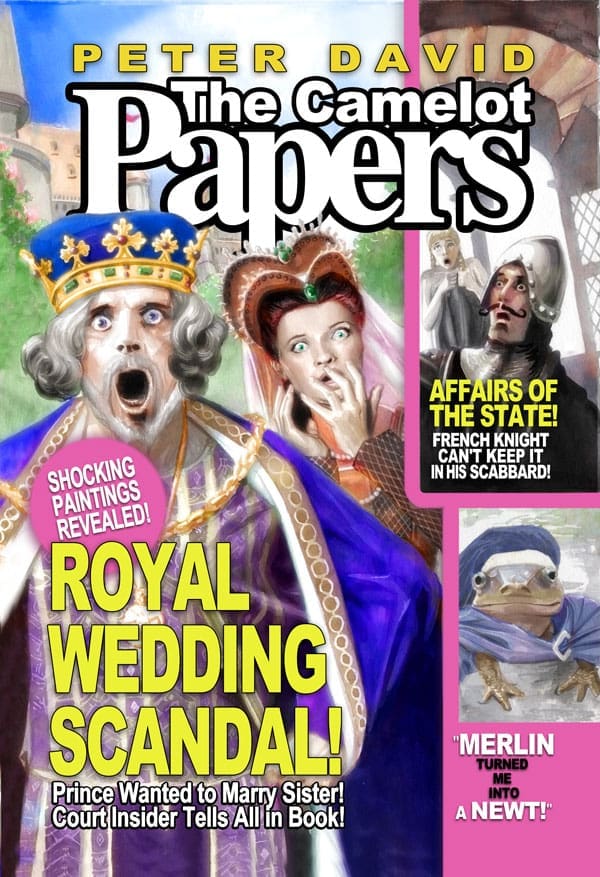
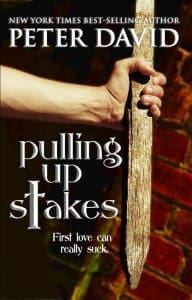
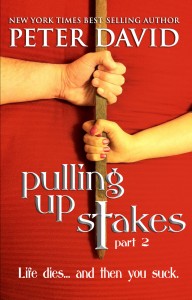
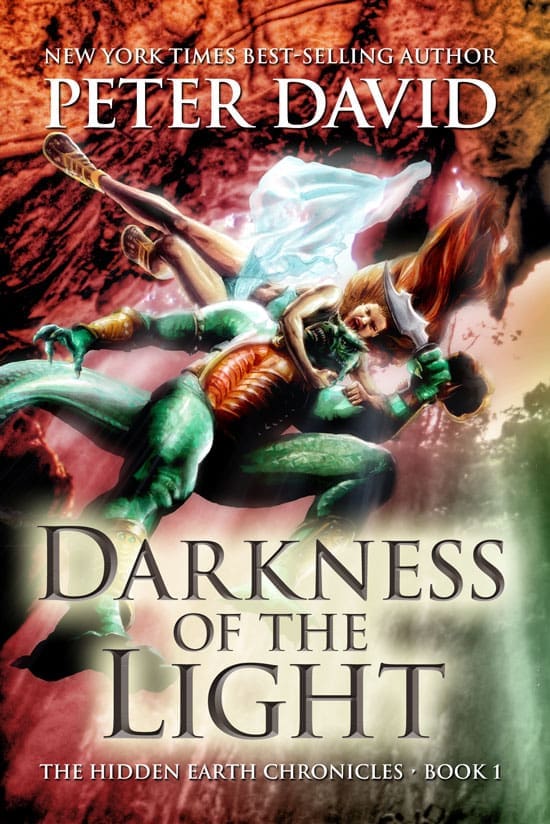
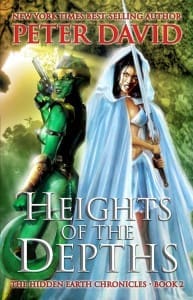
Wonder why Diamond chose to not run it.
Every time I read (or watch) something from Sim I brace myself for the ride; I might not agree with him but he usually makes interesting points and show different angles from wich to observe things.
.
His take on risque content and the hipocritical excuses to peddle softcore imagery is amazingy on spot and reminds me of the controversy regarding some titles on DC’s gimmicky relaunch. Specifically, Starfire’s portrayal. The absurdity of the whole thing was adressed by many but none as brilliantly as David Willis webcomic;
.
http://www.shortpacked.com/2011/comic/book-13/04-remedial-adulthood/math/
.
I’ve been reading about bringing children back to comics ever since I was almost a child myself (36 right now) but most I have seen are linked to licensed cartoons. Mainstream superheroic universes seem to have simply ceased to try.
I think there is a lot of talk about content (everybody loves to play the moral guardian), and not enough talk about other factors that limit comic book sales a lot more: publicity, availability, and price.
.
The 2 million people like “Lucy” that grew up with the cartoon probably don’t even know there is a Red Hood comic book featuring Starfire relaunched by DC. If they know, they probably don’t know where to buy it. If they try to buy it, they’ll probably be frightened by the cost of 3 dollars per 20 pages of a story that might take 6 months to conclude.
.
There is a lot of stuff to fix in the comic industry before we can even begin to address content.
Availability sounds about right. The cartoon was available on tv, easy to get. Comic books USED to be easy to get on those spinning racks in grocery stores, smoke shops, pharmacies, etc. Now? Specialty shops kids have to go halfway across town to find. Think that might have something to do with it? Do the companies even do ‘by mail subscriptions’ any more as they used to?
While I agree with you in principle, Rene, there’s no reason not to fix content while also fixing the other issues.
.
Content itself may be more important than the other factors for the exact reason that webcartoon pointed out: if the content is still laughable, none of the rest of it will likely matter.
.
But then, on the other hand, the other issues are far more likely to be fixed before content.
.
I recent went and reread a lot of late 80’s stuff like New Mutants and the like, and it’s amazing how often those teenage characters were shown in the shower and so on. Although, I suppose at least they weren’t all normally in skin-suits, save Magma; that’s gotten a lot worse of the years across the board.
Craig, fixing content is important, but I’m always reminded of the 40-year old virgin nerd that decides to work out, dress better, take lessons in how to talk to girls, but then never leaves the house to actually MEET the girls. Maybe he expects the girls to spontaneously knock on his door?
.
And actually getting the comics to a mass audience would be a wonderful incentive for Marvel/DC to moderate their content.
.
As for comics from the 1980s, they were never as innocent as people seem to remember them. But, like you’ve said, a lot of the sexism we have today is in the artwork. Problem is, Marvel and DC want to have it both ways. You get Gail Simone to write some strong female characters, and then you get Ed Benes that draws in the style of “here is something for you to jërk øff to.”
.
It is sort of insane. At least with “Red Hood and the Outlaws” and “Catwoman” they’re matching the writing to the art.
Bit of perspective…
.
Guillem March, the artist on Catwoman, used to publish almost exclusively on the company I worked for (Dolmen). He is amazingly versatile and, as an author (that is, when he also writes) his work is specially popular with female readers. His first four stand-alone works were all titled with a female name, had a female protagonist and had a strong intimist themes. Yet DC decided to ask him to do something much closer to his ilustrations for Playboy mag. So far his contribution to american comic books will be remembered like soft core jërk øff material by most while those who know him (he is actually a sweet shy guy) know he could really shine with Gail Simone at the script.
If “Lucy” had read about Starfire in TEEN TITANS, she would have seen that the character’s origin involved her sister betraying Starfire and “Koriand’r’s older sister made the most of her sibling’s bondage with years of horrific servitude, torture and unprevented sexual exploitation at the hands of others. When Koriand’r killed one of her captors who had previously raped her, Komand’r decided to execute her as punishment.” (Thanks, Wikipedia!) Using the TEEN TITANS cartoon as the basis for the characters is like basing comparing the Batman comics to the Adam West tv series.
(And that’s to say nothing of the strong BDSM elements of Wonder Woman that’ve been around since she first appeared.)
Well, yes. That too.
.
I’ve said a number of times in the Comic Book Resources site and other sites that the divide between “fun comics” and “gritty comics” that is a obsession of current fandom is a post-1990s phenomenon.
.
When TEEN TITANS had its heyday with Wolfman and Perez, fun and gritty co-existed in the comic.
I did read Wolfman&Perez Titans too and taking that Starfire you can go in different directions, TTGo and DC-NU ones beign just two of them. The cartoon one is, in my oppinion, much closer to the original’s essence, even if in an infantilized version. It does obviate the grit in the original’s origin, but the character behaves in a similar way. DC-NU’s one focuses on the grit and sexual tones of the original to build a mannequin. It doesn’t have to do with beign a moral guardian; the original character was overtly sexual in a time when that was not the norm. But on her, that was a trait, not the basis of the character.
.
The thesis on the strip I linked isn’t that sex or grit is bad; Mr.Willis does include some freaky sex in his own work so I doubt that is his problem with DC-NU. His (my) problem is that DC decides to go in the direction that (they think) caters to the male teen-minded (not actually teenage) reader. That their idea of a strong female character is one who “takes what she wants” but coincidentally allways take what a horny male teen would (beautifully drawn Catwoman’s #1), much like Sim denounced. Reading through a decade of that kind of portrayal was boring enough not to cry foul when they try go in that direction again.
.
Its not the morality (I myself have been collecting comic erotica since I was 17, after all) but the sortsightedness of it all that bothers me.
.
The “2 million vs 100.000” comparison might sting but when you say you are rehauling the whole DC universe to atract new readers, I think it’s a poignant one.
Yes, the new Starfire is sexist and juvenile. It’s a shameless mášŧûrbáŧørÿ fantasy. Red Hood and the Outlaws isn’t a comic I’d recommend to anyone.
.
But any discussion about content regarding attracting new readers is equally mášŧûrbáŧørÿ while we don’t tackle the more important matters of availability, advertising and price.
.
Hombre, don’t believe them when they say the relaunch is a way to attract new readers. It is a way to attract lapsed DC readers and Marvel readers. I don’t think people who only know the characters from movies and cartoons are their target.
.
To get some of those 2 million, you’d have to place plenty of ads on TV, and magazines, and movie traillers. Is DC doing that? Make the cartoon fans KNOW there is a Teen Titan comic in the first place, right? And then make sure the 2 million cartoon fans know WHERE to buy the dámņ things. And come up with a price that is attractive to people outside of the aging, addicted fanbase.
.
In a way, it’s the same futility of the fights over whether or not to “change” the characters in the comics to reflect the movie versions. It doesn’t matter, because all the millions of people that have watched Thor and Captain America and X-Men: First Class are not being properly targeted to buy the comics.
.
It is silly to change stuff around to reflect movies and cartoons and then just sit and wait for the people who don’t usually read comics to spontaneously flock to you. It doesn’t work like that.
Yes, DC has run TV commercials about the New 52. And they’re not just available in the monthly physical format, which is what you seem to be focused on; the digital versions and eventual trade paperbacks greatly increase potential availability. I’m not saying there aren’t any issues with their approach, but the picture is broader than you paint it.
.
(Also, saying “comics need to cost less and be more widely distributed” isn’t as simple as it sounds. The reason comics were dropped by convenience stores and the like is that they were less profitable than other things that could go in that space, such as glossy magazines. Just dropping prices would make them less attractive to these retailers, not more.)
Digital has a lot of potential, but Marvel and DC seem too afraid of alienating comic book store owners. The prices are absurd, even more outrageous than the prices of physical comics.
.
Being a foreigner to the US, I have not seen the ads. In any case, to be most effective, the ads should: a) reach the audience of the movies/cartoons. We have a Young Justice cartoon? Make sure the ads are shown in THAT time slot. It seems reallu obvious, but I would not be surprised if they did not do the obvious. b) It’s not enough for the ad to say the comics are good. Most people don’t even know there are such things as comic book stores.
.
Trade paperbacks in book stores seem to be the best solution to the availability problem. But they’re still a bit too expensive for the potential 2 million costumers El Hombre Malo is talking about. Trades should cost about 8 dollars a piece to be attractive to a mass audience.
.
Maybe 15 dollars for a 5-year subscription would be nice too.
.
I know there are complex reasons for comics to have been dropped by convenience stores, I know a solution isn’t easy to come by. And that is exactly why I’m opposed to the simplistic thinking of “change content and the new millions of fans will come”.
Digital has a lot of potential, but Marvel and DC seem too afraid of alienating comic book store owners. The prices are absurd, even more outrageous than the prices of physical comics.
.
When it comes to pricing, they’re simply trying to follow the path laid out by book publishers: imo, intentionally sabotaging the digital market.
.
The relationship between comic book companies and comic book shops is more unique than book publishers and book stores, but that’s still no excuse for intentionally holding digital comics back.
Distribution is important, of course, but content is too. In the american market, comic books might have lost their traditional venue in supermarkets and general stores, but in Spain they never did lose their spot in street newstands, yet children read mainstream comicbooks as much (or as little) as americans do. More young-oriented comic magazines (one of them Panini’s Marvel one) sell much better than the best monthly comic book. Content matter.
.
Besides… in the USA comic books have gained impulse in general bookstores during the last decade. When I visited NYI watched a lot of kids reading comics in Barnes&Noble and similar stores. TPBs, regardless of their intrinsic value in comic book stores, are a product tailor made for general public bookstores, pretty much like the french Albums. Libraries (and not only in the USA) are carrying more and more comic books and when the content is appropiate, they hop out their section onto the children book one. Any book store clerk or owner can tell you that section is a gold mine. It might not be the same exposure they had on supermarkets but its a pretty good one. European Disney’s Witch comic book sold more in Spain and Italy than half the marvel catalogue put together just by securing a place in Children sections of mainstream bookstores. Content matters because bookstore managers are usually careful about what they place in that section.
“When it comes to pricing, they’re simply trying to follow the path laid out by book publishers: imo, intentionally sabotaging the digital market.”
Its a complex issue. The Digital market offers a better margin and less risks, cutting the retailer from the equation. But while they want readers to be their clients, retailers are for the time beign and they dont have anything to gain from the digital medium. Any step in the wrong direction and you have Barnes&Noble pulling all DC TPBs from the shelves…didn’t that happen just recently?
.
There is another long term risk for publishers… without the production costs and distribution intricacies, they might become another middleman to cut between authors and readers. This doesn’t applied to Publishers like Marvel and DC but will certainly change the landscape of the editorial bussines in a few decades.
You know, there is another obstacle to making comics adequate to an all-ages audience. Back in the 1970s and 1980s, they managed to make them attractive to young and old.
.
Nowadays, very few writers manage to strike this balance. PAD is one of the few, and he is a veteran. All-ages has become synonimous with kiddie stuff.
Dang it, now I want to read the Garth Ennis/Simon Bisley Green Lantern.
Price. Let’s see, 1956 comic, about 26 pages of story for a dime. Crappy printing, less than 100 shades of color, writers and artists who were paid very little and got almost no credit. Hershey bar cost 5 cents. First class letter, 3 cents.
2011 comic, 22 pages of story for $3. Good printing, thousands of colors, many writers and artists making a living wage with good credit given. Hershey bar (pretty much the same) costs 75 cents, first class letter (pretty much the same) 45 cents.
If comics had gone up the same amount as candy and postage, a comic would cost between 90 cents and $1.50. And would have crappy printing and underpaid creators.
Choose.
Obviously, I want creators to be well-paid. But you know what? I could live with cheaper printing and 100 shades of color, if that means a more affordable and accessive product. But that is IMO.
.
You forgot to mention one additional factor. In 1956 and all the way through the 1990s, comics had more story content in those 22 pages. Today, with most Marvel/DC superhero titles, you pay 3 dollars for the equivalent of 20 minutes of a movie or TV show. You need SIX of the f***ers to get the “whole movie”.
.
Would you pay 18 dollars for a movie?
Would you pay 18 dollars for a movie?
At the rate things are going? Just wait about five years.
.
I mean, it wasn’t all that long ago that you could just as easily have asked, “Would you pay $100 or more for a Broadway show” or “Would you pay more than $15 for a baseball game?” Then again, to me it was yesterday that comics were ten cents and gasoline was thirty cents a gallon, so…
.
PAD